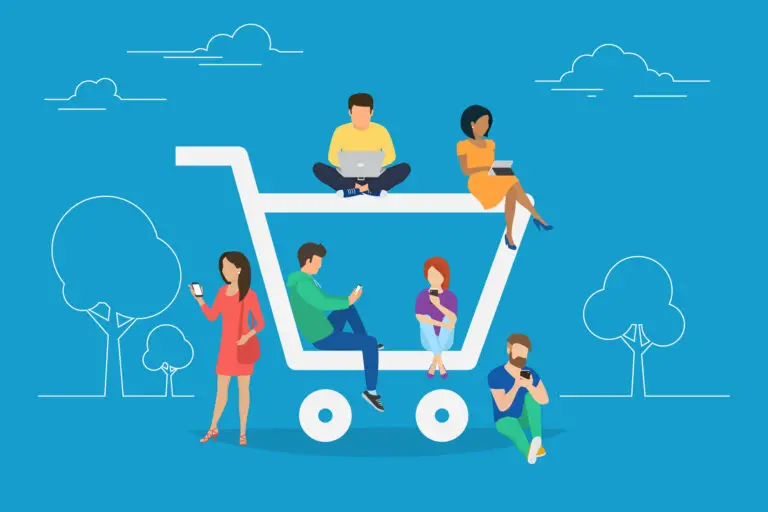12 Ways to Reduce Returns in Ecommerce (2024)
Ecommerce returns can quickly become a disease that bleeds into profit margins, conversion rates, and ultimately threatens your online business.
The most effective strategy to reduce returns in ecommerce is to develop a strategic shipping policy. Here are 12 factors it needs to have.
How to Reduce Returns in Ecommerce?
1. Offer Product Exchanges Over Returns
Offering exchange over return helps the seller in retaining the lost revenue.
Besides the income, the returned product also impacts the customer experience, retention of customers, and customer loyalty to a particular brand.
To minimize returns, customers should be offered an exchange of similar products of different sizes and colors.
How to Do it
- Offer fast exchange for products of equivalent value; the idea is to retain the customer. This will also be helpful in reducing product returns in the future.
- Offer a financial incentive in the return policy for shoppers to return their product for credit or loyalty points rather than a refund.
- Offer free shipping on exchanges, and provide easy product returns because returns are also an opportunity to enhance customer experience and drive repeat purchases.
2. Create Product Videos
Short videos within your product listings can help in reducing returns as the customer gets a complete perspective of the product in the video.
Video not necessarily means massive budgets and filming times.
Short, simple videos showing 360° of the products are all you need to minimize product returns your ecommerce business receives because of confusion over the product.
How to Do it
- High-quality videos require keeping your device as still as possible. A tripod will allow you to set your camera angle in advance and minimize movement.
- The video should display the product functions and the use of the product. This gives clarity to the customer on what they will receive, and it will be able to perform the intended purpose.
- Use the right angles and try to provide a complete 360° overview of the product.
3. Add Customer Reviews
The best way of marketing is through word of mouth; the best individual who can promote your product is the one who uses it.
Encourage customer reviews; the more, the merrier. Many online platforms rank your product based on the customer reviews it has received.
This will also help you identify any issues or problems with the product and provide your customers with the best ecommerce returns solution.
How to Do it
- Use review plugins to embed the reviews and ratings on your website and provide a form for customers to write their reviews. Some of the popular plugins include Starfish Reviews, Site Reviews, Google Review Widget, etc.
- Keep a constant follow-up with customers to provide reviews by sending them customized emails or messages.
- Give customized feedback patterns that will help prospective customers to relate.
- For example, Nike provides customers with the option to evaluate products based on three criteria: size, comfort, and durability.
4. Offer Live Chat
Offering live support to your customer in deciding what they want helps them make informed decisions.
Live chat increases sales and helps the customer set their expectations clearly, which helps in reducing ecommerce return rates as well.
The live chat feature is essential in making the purchase decision. It also provides after-sales services if they counter any issues in using the product.
How to Do it
- Use live chat software to integrate with your website. This software helps you slash your response time by offering chatbot functionality.
- Be polite and offer generous support. Remember, customer retention is more important than the cost of returns.
- The customer service on your product should be well educated so that they know the best product to suit the customer.
5. Display Realistic Delivery Estimates
With the evolution of quick commerce, customer expectation of delivery time has reduced considerably.
They want their product delivered the next day, which is impossible in all cases.
If the orders take longer to get to customers, you need to make it clear on your product pages, basket, and check-out before the customer has placed their order.
This helps in setting the customer’s expectation right and reducing the return rate in ecommerce.
How to Do it
- The delivery estimates should be highlighted throughout the customer journey, especially at the check-out window.
- The delivery estimate should take into account the bank holidays and weekends.
- Allow customers to have express or premium delivery services. This provides a more favorable experience to the customers even if they have to pay for it.
6. Don’t Skimp on Product Packaging
One of the best ecommerce returns practices is the appropriate product packaging. The most common reason for product return is because it is damaged.
Packaging is also where most sellers will try to cut corners and save money, which is a mistake.
Use sturdy boxes and bubble wrap and mark fragile items prominently to be handled with care. The product package should also highlight the return policy.
How to Do it
- If your items are susceptible to water damage, use waterproof packaging – it could rain when your package is out for delivery.
- For fragile items, make sure you use enough padding and bubble wrap – it’s likely to be sat under a pile of other boxes at some point on the journey.
- Mark your boxes with information about what’s inside and how they should be stored
7. Take Real-World Product Images
One of the frustrations customers face when receiving purchased products is that they need to look like they are in the pictures on the website.
Taking real-world images from multiple angles is vital to provide complete product information to your client.
If you want to build long-term relations with your customers, invest in good photos that show your products how they are.
High-quality images are the best solution for ecommerce returns.
How to Do it
- Use a photographic sweep for your product photography. A photography sweep is an act of creating a ramp with posterboard paper that gives the effect of limitless white space behind your product.
- Use natural and artificial light wisely. Natural light is best for outdoor product displays, whereas artificial light is useful to showcase every single product detail, for example a watch or a wallet.
- Provide context to a product through images. For example, a model holding a bag provides the perspective of the product size relative to the model’s body or hand.
8. Use Detailed Product Descriptions
Many products require exact details of the product’s size, weight, and material to enable customers to select what they need.
The idea is to provide consumers with as much information as possible before he locks in their purchase decision.
Many customers return products because they are different from the description mentioned on the platform.
How to Do it
- Create a descriptive headline that will hook your customers to read through.
- Provide easy-to-read and bullet-form information to highlight the critical product descriptions
- Do not just list out features. For every feature, describe what benefit it provides for the user.
9. Provide Detailed Sizing Information
Brands must ensure that customers can easily understand the sizing and fit information to reduce product return rates.
Use the customer feedback received for products returned for over or undersized products and incorporate them in your size charts. The sizing information should be easily understood.
This can be best achieved by including a fit guide that shows how the fit is different in different categories.
The brand should also provide explicit instruction on where/how to measure relevant body parts.
How to Do it
- In an industry where sizing is crucial, such as apparel or shoes, make sure to place your size chart somewhere prominent and easily accessible, such as your top navigation menu.
- If using a model in your imagery, make sure you give information on their height and which size they’re wearing.
- If you sell overseas, ensure that you provide international conversion charts for clothing and metric and imperial dimensions.
10. Track Customer Feedback
Customer feedback is essential to learning more about the products you sell and how they are used in real-life scenarios.
This will help you identify any potential quality issues with the products you stock or the information you’re providing.
Identifying the reason for returning an item is crucial to streamline your future sales.
How to Do it
- To handle customer returns, provide check boxes on return forms to help flag issues, such as whether the product looked different in the images or seemed larger/smaller than expected. You can then review your product listings to see if they could be improved.
- Offer incentives to increase the number of feedback, such as ‘win your shopping’ or a voucher for a discount on your next purchase.
- Use open-ended questions to identify the ecommerce return reasons.
11. Manage Serial Returners
A serial returner is a shopper who buys many things from an online shop but ends up with excessive returns.
These shoppers usually buy different items of different colors and sizes to return all except the ones they like to exploit the easy return policy offered.
You cannot avoid serial returners; however, you can take steps to reduce such returns. Amazon, for example, has completely banned such users.
How to Do it
- Use data and statistics to identify the serial returner. You should have the correct technology to identify problematic shoppers.
- Limit the number of returns that a specific customer can do.
- Provide an exchange instead of a refund. Make this ecommerce returns policy visible on your platform to ensure everything is clear.
12. Use Returns Management Software
The purpose of return management software is to manage customer returns for both you and the customer.
The software automates the process and deals with returns by generating shipping labels and refunds, so there are fewer bottlenecks.
How to Do it
- Ensure return optimization by providing self-service return options to the customers.
- Use the right technology to communicate with the customer who wants to make a return and give them a choice to make a simple exchange or even upgrade to something different.
- Return management software can help you determine what can be sent directly back into inventory, what needs repairs or discounting, and what items should be diverted for recycling.





